The Bray School
Headmistress Ann Wager taught at the Bray School in Williamsburg, VA, from 1760 to 1774, educating enslaved children. Interpreter Antoinette Brennan shares details from Wager's life and describes the school and its operations.
Headmistress Ann Wager taught at the Bray School in Williamsburg, VA, from 1760 to 1774, educating enslaved children. Interpreter Antoinette Brennan shares details from Wager's life and describes the school and its operations.
The Elgin Schoolhouse is a historic school in rural Nevada's Lincoln County. The schoolhouse was used from 1922 through 1967, when its last student reached eighth grade. Today, the Elgin Schoolhouse State Historic Site features half of the house's original items. The rest are authentic to the time period.
The site offers exhibits and tours.
Woodrow Wilson spent his childhood in Augusta Georgia in this house. Today, the house functions as a museum dedicated to Wilson's early life.
School tours of the house were developed with Georgia teaching standards in mind. Teacher resources have also been developed for the site.
According to BackStory:
"To mark the rebirth of BackStory as a weekly program, the History Guys set out to explore the earliest stages of life in America. They begin with a few of the basic assumptions we have about birth in America today, and spend the hour exploring how those assumptions came into being. How is it that hospital doctors moved in on what had been midwife’s exclusive territory? Why did Puritans think their newborns were damned from the outset? When did courts start ruling that fetuses had legal rights? Why have generations of Americans resisted the notion of birthright citizenship?"
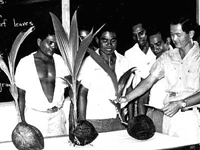
This website offers more than 50,000 slides and photographs that document the history of the American period in Micronesia from 1947 to 1988. The image collection can be browsed or the visitor can sample the types of images in the collection through 12 short animated image tours. The topics of the image tours give an idea of the variety of images available in the collection: parades, dancing, voting, agriculture, stone money, canoes, architecture, women, leaders, education and children, health and hospitals, and men. The only search capability on the site is a Google search of the photograph description files. Additional resources include a map of Oceania and a link to the Hawaii War Records Archive. This archive is a useful source of images for those researching, writing, or teaching the cultural history of the Pacific Islands.
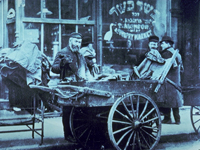
A gateway and an archive of numerous articles on New York history, this site "focuses a particularly long lens on the early history of political and economic events, panics, riots and other related matters affecting or contributing to New York City's development and growth." Its main feature is the New York state and New York City directories. (The U.S. directory is currently unavailable.) The New York state directory offers more than 700 links and more than 60 articles organized under 21 topics that include the arts, cities and counties, ethnic groups, military, societies and associations, transportation, women and their professions, and worship.
The New York City directory offers more than 5,200 links and more than 700 articles organized under 58 topics that include architecture, the arts, business matters, city government, clubs and societies, crime and punishment, education, ethnic groups, 5th Avenue, Harlem, immigration, New York City panics, real estate, temperance and prohibition, and Wall Street. The visitor can search the entire site or each directory by keyword. This site is a good starting point for researching the history of New York. It should also be useful for literary scholars, writers, and historical societies.
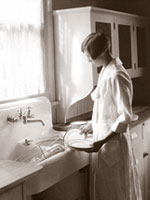
This site offers books and journals related to the science of home economics. Its goal is to document the rise of home economics to a profession, beginning around the middle of the 19th century, and to correct an academic marginalization of the field.
Primarily focused on the years from 1850 through 1925, the site contains digitized texts of 934 books and 218 journal volumes, totaling almost 400,000 pages. Visitors may use the search engine, or look through the Subject index, or browse alphabetically by author, title, or year of publication.
Topics range from Child Care to Housekeeping to Retail. Each entry includes a 500- to 750-word essay, two or three images, a very detailed bibliography (available as a PDF file), and a list of possible subtopics. This is an outstanding site full of primary sources and a great resource for researchers, students, and teachers.
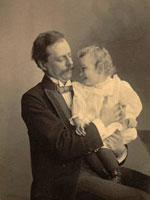
This collection from one of the nation's leading repositories for sources on women's history features photographs, letters, account books, diaries, legal documents, artwork, and memorabilia generated by four prominent northeastern families from the late 18th through the early 20th centuries. The four families—the Bodmans, Dunhams, Garrisons, and Hales—are white, middle-class families, and their experiences represent only a portion of American society in the 19th and early 20th centuries.
This site features 63 documents and images gathered from the families' papers ,and there are two ways to navigate them: by family or by one of four themes (Family Life, Social Awareness and Reform, Arts and Leisure, and Work). Each family or theme has its own page, with short (350500 word) interpretive text combined with excerpts from the documents. Each excerpt is accompanied by links to the entire document—both a scanned image and a transcription.
The theme "family life" contains documents that reflect courtship patterns over the 19th century, childrearing practices, and 19th-century gender roles. "Social awareness and reform" features items related to the abolition of slavery and changing perceptions of race, and women's suffrage. Some of the materials within "arts and leisure" reflect increased opportunities for professional women artists in the late 19th and early 20th centuries. The "work" theme includes materials that demonstrate the barriers women faced within the workplace. This site, when supplemented with additional resources, can help show students how to use family papers to study U.S. history.
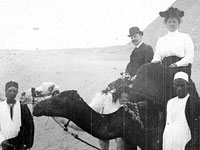
The Brittinghams were a prominent and influential family in Wisconsin. This collection of more than 1,600 images consists of their personal and travel photographs taken between the years 1897 and 1922. These images "capture the private lives of a wealthy family at the turn of the century, and document their travels to 22 states and 32 countries." The wide variety of subjects includes family life, social life, the Brittingham homes, and various scenes from around Wisconsin. More than 750 slides picture international locations. The site also offers an interesting collection of slides that picture forms of transportation encountered by the Brittinghams, including airplanes, sailboats, streetcars, trains, carriages, and sedans.
The collection can be browsed in its entirety or by pre-selected subjects (Wisconsin, Brittingham family, social life, international travel, interiors, or transportation). Visitors can search the slide collection by using the guided search option and selecting Brittingham Lantern Slides in the drop-down menu. For those researching the lives of the well-to-do in the U.S. at the turn of the century or, more generally, the social and cultural history of Wisconsin or the U.S. in the early decades of the twentieth century, this collection of images is a useful resource.
One of America's highest ranked military officers, Gen. John J. "Black Jack" Pershing, spent most of his childhood years in the small town of Laclede. Pershing was born Sept. 13, 1860, and moved into the Gothic nine-room house in Laclede with his family at age six. He taught at Prairie Mound School, and in 1886, graduated from the U. S. Military Academy at West Point, thus beginning his military career. Between 1886 and his military retirement in 1924, Pershing fought his way up through the military ranks. In 1917, Pershing was sent to France as Commander-in-Chief of the American Expeditionary Forces in World War I and two years later was named General of the Armies of the United States by a special act of Congress. Today, visitors can tour Gen. Pershing's boyhood home. A statue of "Black Jack" stands next to the home surrounded by granite tablets naming war veterans. Inside Prairie Mound School, an exhibit gallery allows visitors to walk through the many doorways Gen. Pershing passed through during his childhood life, military career, and numerous accomplishments.
The site offers a short film, exhibits, and tours.